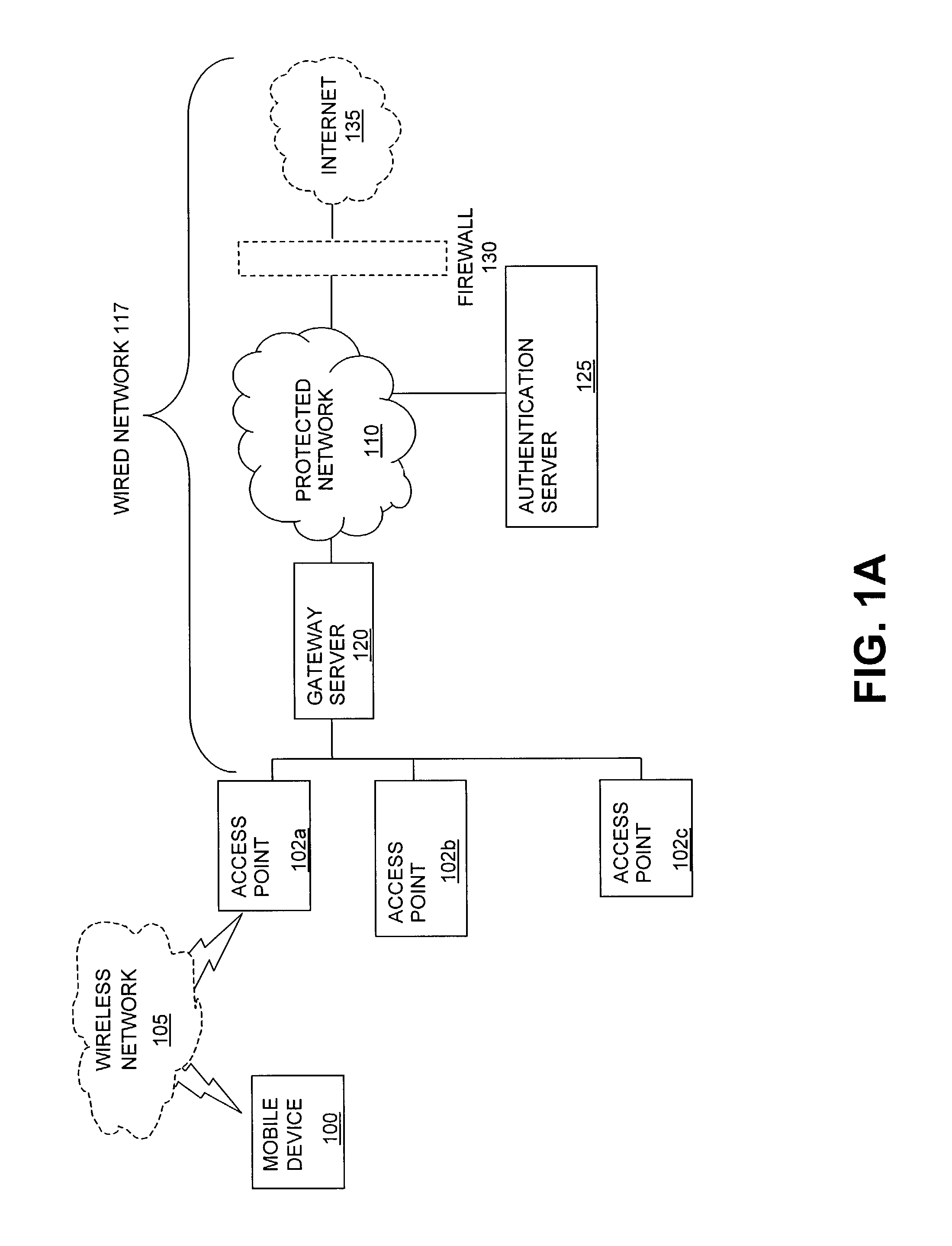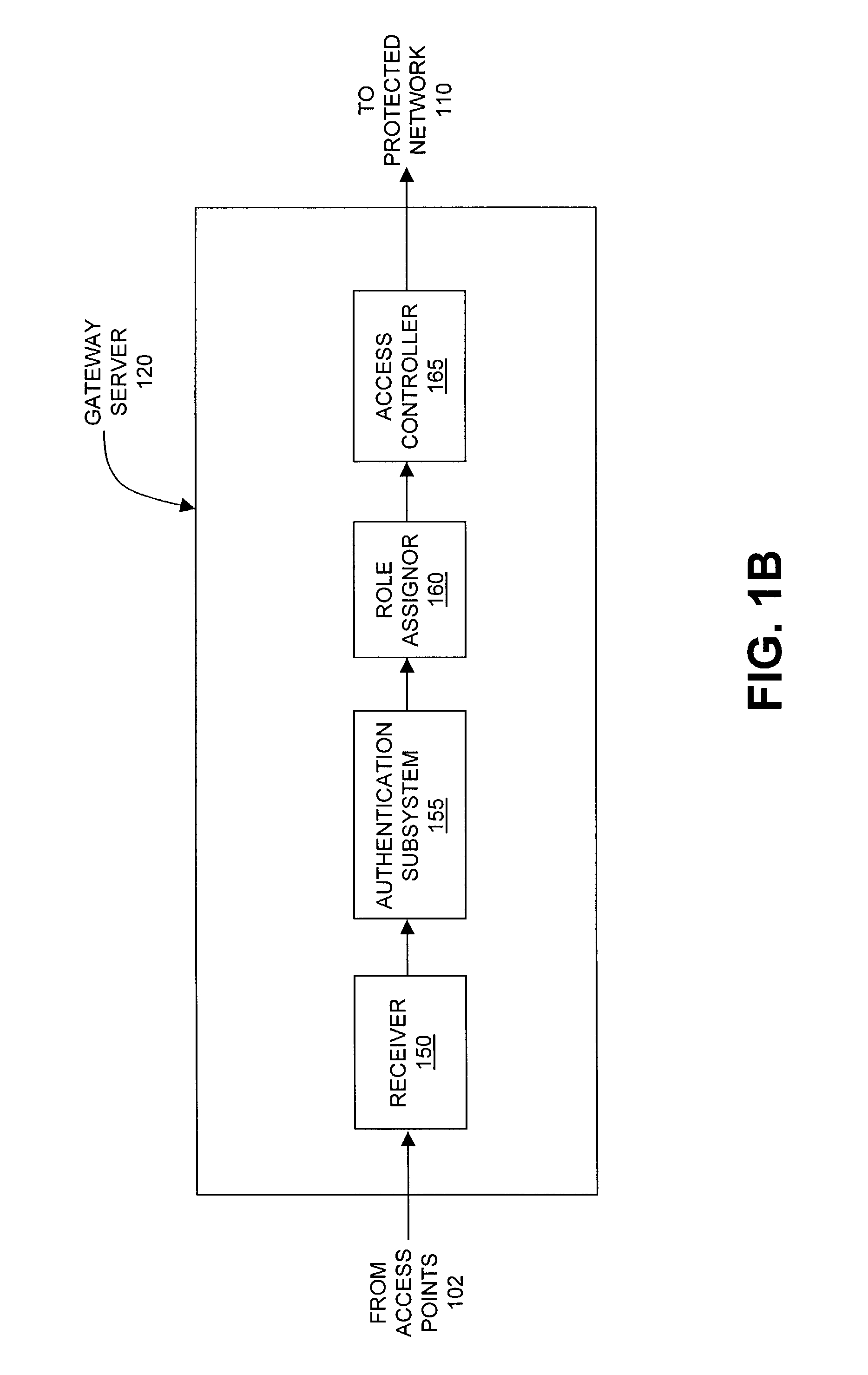Method and system for managing data traffic in wireless networks
a wireless network and data traffic technology, applied in the field of telecommunications, can solve the problems of wireless networks introducing a series of new security problems to organizations, simplifying access points that provide less functionality, and not providing the features necessary for operation within an enterprise, and achieve the effect of facilitating seamless roaming of mobile devices
- Summary
- Abstract
- Description
- Claims
- Application Information
AI Technical Summary
Benefits of technology
Problems solved by technology
Method used
Image
Examples
Embodiment Construction
[0037]Referring to FIG. 1A, in one embodiment, a user of a mobile device 100 communicates with an access point 102a via a wireless local are network 105 to access a protected network 110. The access point 102a is connected to a wired network 117, which includes a gateway server 120, the protected network 110, an authentication server 125, and a firewall 130 which is a gateway to the Internet 135. The mobile device 100 can be any sort of device that has wireless communication capability, including but not limited to handheld, small, and large computers, personal digital assistants, peripherals, appliances, machines, telephones, toys, games, and so on. In one implementation, the mobile device 100 enters the coverage area of the access point 102a that communicates between the wireless network 105 and the wired network 117, and upon entry, the mobile device discovers and identifies the wireless network 105. The user of the mobile device 100 seeks to access the protected network 110 via ...
PUM
 Login to View More
Login to View More Abstract
Description
Claims
Application Information
 Login to View More
Login to View More - R&D
- Intellectual Property
- Life Sciences
- Materials
- Tech Scout
- Unparalleled Data Quality
- Higher Quality Content
- 60% Fewer Hallucinations
Browse by: Latest US Patents, China's latest patents, Technical Efficacy Thesaurus, Application Domain, Technology Topic, Popular Technical Reports.
© 2025 PatSnap. All rights reserved.Legal|Privacy policy|Modern Slavery Act Transparency Statement|Sitemap|About US| Contact US: help@patsnap.com



